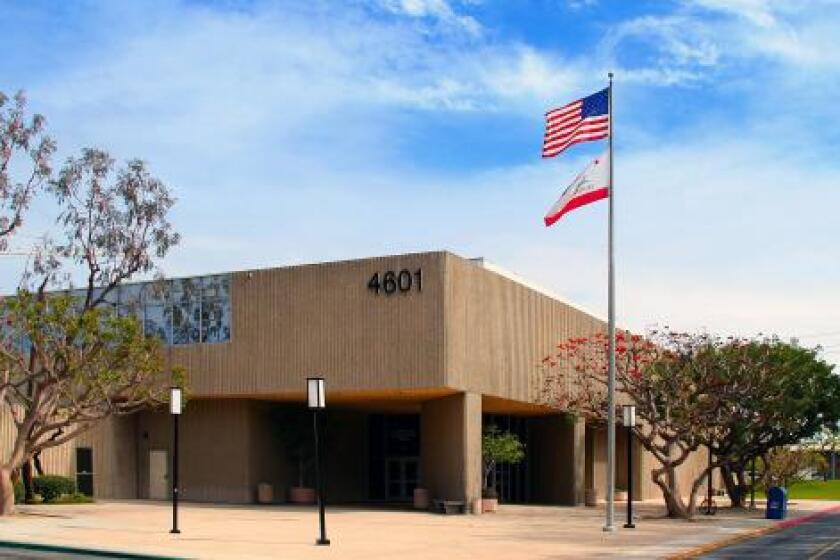MIKE WHITEHEAD -- The Harbor Column
- Share via
Ahoy.
I’ve received considerable response from last week’s column about the
harbor depths as reported by the Corps of Engineers in the United States
Coast Guard’s Local Notice to Mariners. Most of the readers wondered
where they could get a copy of the depth’s table. Just got online to o7
https://www.navcen.uscg.gov/lnm/d11f7 . We are in the 11th district. Just
click on 41/01 and then scroll to the last page for Newport Bay channel
depths table. Other readers questioned why neither the Army Corps of
Engineers, the city or the county are dredging our harbor. Technically, I
believe the Corps is responsible for dredging maintenance in most of the
main channels. However, we are classified as a recreational harbor, so
all the Corps limited funding is being directed to the commercial harbors
for dredging, and I do not see dredging in the near future unless we
locally identify funding for dredging.
Maybe it is time for the local governments (city and county) to
seriously address dredging the lower harbor. Funding is being secured to
dredge the Upper Back Bay, so maybe it is time to add the lower bay into
the equation. A few readers wrote that the city should buy dredging
equipment to continually dredge the harbor to maintain depths but also to
replenish the bay beaches. It was apparent that no one wants the area’s
most valuable resource to fill in and hinder safe boating. It is sad that
during the Newport to Ensenada Yacht Race that a few boats ran aground in
the harbor and the larger, exciting sailboats spent the night in Long
Beach Harbor as not to risk running aground in Newport and potentially
damaging their keels and rudders.
I have two thoughts for you to think about while we are on the issue
of dredging. The eel grass regulations for dredging have become a
nightmare, so we need to bring common sense and scientific reasoning back
in to the mitigation program. Also, if you happen to have a dock
downstream that is constantly filling in and requiring maintenance
dredging, then you should not have to jump through the hoops every time
to maintain the designed depth and pay the cost out of your pocket.
Dredging, the never-ending chore.
***
Tip of the Week are a few hints for winterizing your boat even in our
mild winter weather. Most boaters in Southern California never think
about winterizing their boats unless they happen to have a boat on Big
Bear Lake or Lake Arrowhead. However, there are a few steps that you
should take to help protect your favorite weekend investment. Let me
start by saying that our weather does change enough to cause a few
problems from condensation to rain water seepage, and the boats are
normally not used as much in the so-called off-season as in the summer
months.
First and foremost, as I have mentioned in previous columns, make
certain that your electrical system is up to par so that your bilge pumps
are operating in order to prevent your boat from possibly sinking during
a rainstorm. Make sure you have sealed your deck and keep the scuppers
and free posts clear of debris. With the cooler weather, the tanks aboard
will produce water condensation on the inside, and you should be
especially concerned with the fuel tanks.
Top off the fuel in your boat to limit the amount of condensation from
the air inside the tanks. Gasoline, if sitting for a few months, may need
a stabilizer added, so check that at one of the fuel docks. At the same
time, change the fuel filters and bleed off any excess water from the
separator. Usually this is a good time for an oil change as the old oil
might have a little water mixed in that will help the rust.
Mold and mildew are very common so try to take off the boat any wet
towels or cushions, and open all the interior doors including cupboards
to allow air circulation. Mildew loves cool, dark and damp areas where,
once it starts, it is difficult to get completely rid of it and the
lingering smell.
Speaking of smell, pump your holding tank and add a deodorizer to the
tank to help prevent the very noticeable holding tank smell. Lastly, if
you keep your boat in the water, check your mooring lines and use chafing
gear before the winter storms hit our harbor. Become one with your boat.
Safe voyages.
* MIKE WHITEHEAD is the Pilot’s boating and harbor columnist. Send him
your harbor and marine-related thoughts and story suggestions via e-mail
to o7 [email protected] or o7 https://www.BoathouseTV.comf7 .
All the latest on Orange County from Orange County.
Get our free TimesOC newsletter.
You may occasionally receive promotional content from the Daily Pilot.



